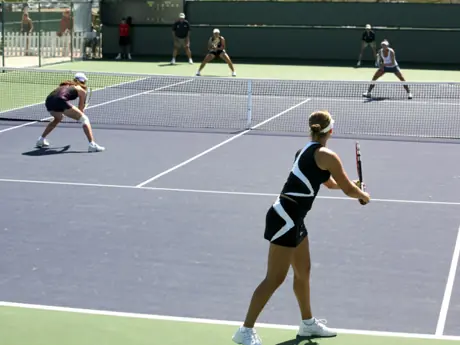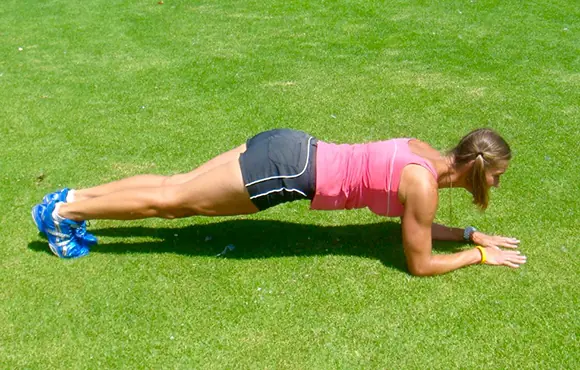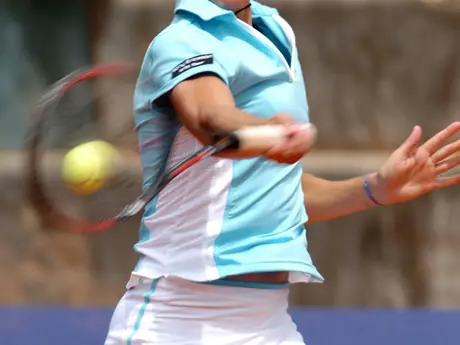Also remember that an exploding topspin has pace. However, this pace is vertical (produced by spin as well as gravity) as opposed to horizontal (such as on a flat shot).
A smart player will redirect this pace (by adjusting the face of the racket) and send the ball back to the opponent in an effective manner. If you try to do this with a huge backswing, either your timing will be affected or you will mis-judge the amount of pace required.
Try to cut down on your backswing just a tad and see how that works (particularly if you actually "stay down" and take the ball close to the bounce). After a couple of shots, you should be able to feel the amount of pace required.
4. Change the Angle of Your Swing
If all else fails, match the angle of the racket with the angle of the bounce.
Assuming that you cannot adjust to a ball as outlined above, you may have to recognize that your opponent has managed to put you in a defensive position. Rather than trying to hit a flat shot against a high-bouncing ball (which may end up going into the net), try to match the angle of your swing (i.e., the path of the racket) with the angle of the ball-bounce.
For example, if the ball explodes off the court at 80 degrees, then try to drop the racket under the ball so that you can swing upwards at 80 degrees as well (towards the ball). Too many players try to "cover" a high-bouncing ball resulting in either a mistake in the net or a short ball.
Match the angle of the bounce and send the ball back high and deep to the opponent. Let him try to fight off the high ball. If you're lucky, he may just miss or hit you a short ball that you can thump!
- 2
- of
- 2
About the Author

CAtennis.com goes beyond the strokes and basic concepts to find the mental, physical and tactical tools necessary for a good player to become great. For more tennis tips visit CAtennis.com.








Discuss This Article